Poisonous algae cover 1.5 km of Chinese lake
Polluted lake water causes cyanobacteria to develop, spreading over the surface of An Huy lake, affecting ecosystems and water sources.
Environmental pollution causes toxic blue algae to thrive in China
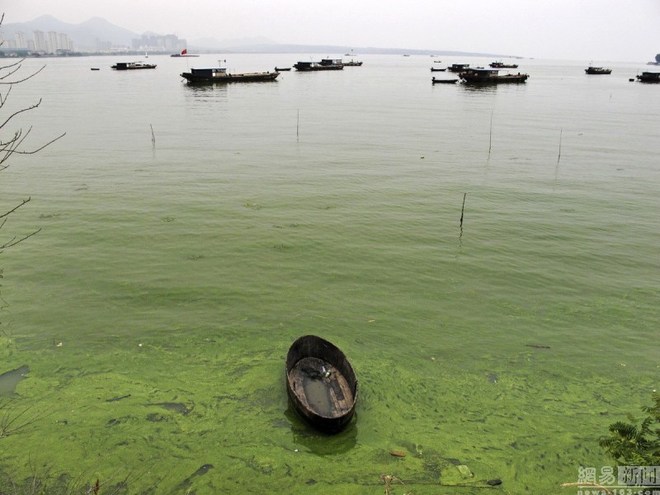
Sao Sao Lake, the section that flows into Song Kieu River, Anhui Province, China on June 14 green blue algae, stretches 1.5 km from the shore to the middle of the lake.
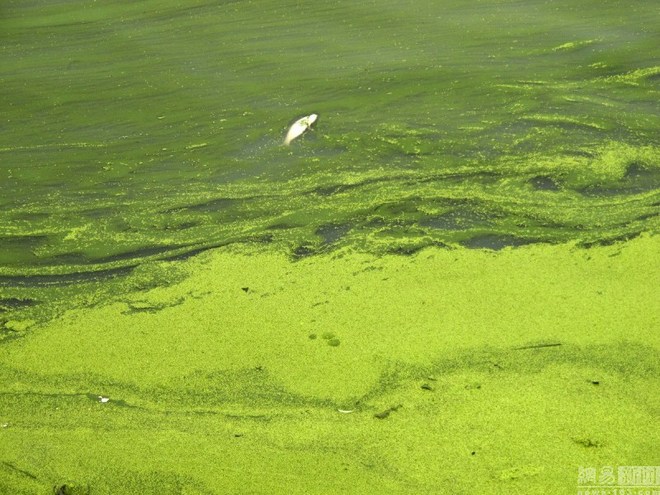
Cyanophyta, which is actually cyanobacteria, is generated by water eutrophication.Excess nitrogen, phosphorus from agricultural and industrial waste, plus warm weather, facilitates cyanobacteria "blooming".
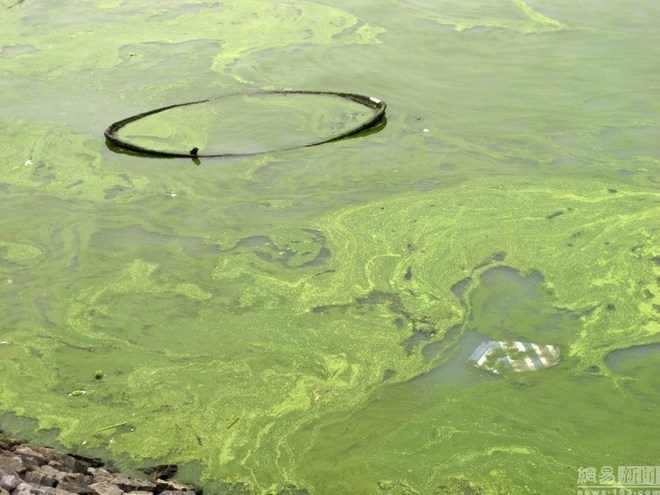
Cyanophyta reduces the concentration of dissolved oxygen in water, degrades aquatic ecosystems.In addition, green algae can produce toxins that affect the nervous system, liver failure, and contact allergies.
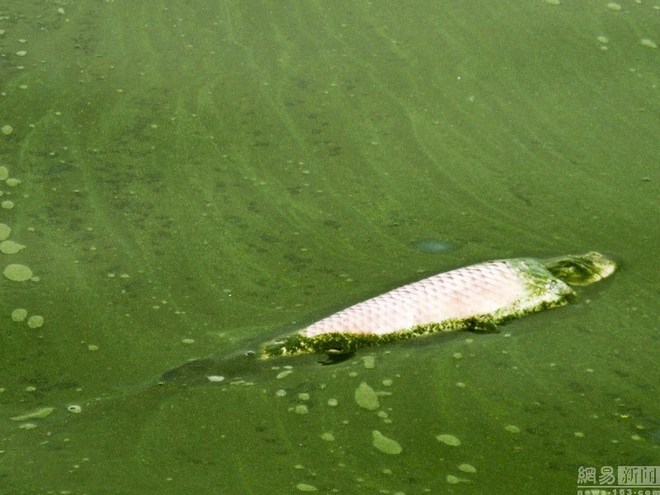
Dead fish floating on Sao lake.
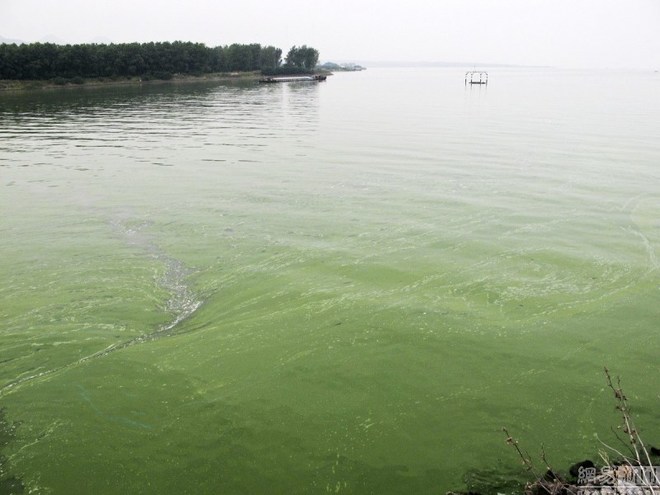
Cyanophyta also affects water sources for living and irrigation.Boiling water does not kill algae toxins but also releases more toxins.
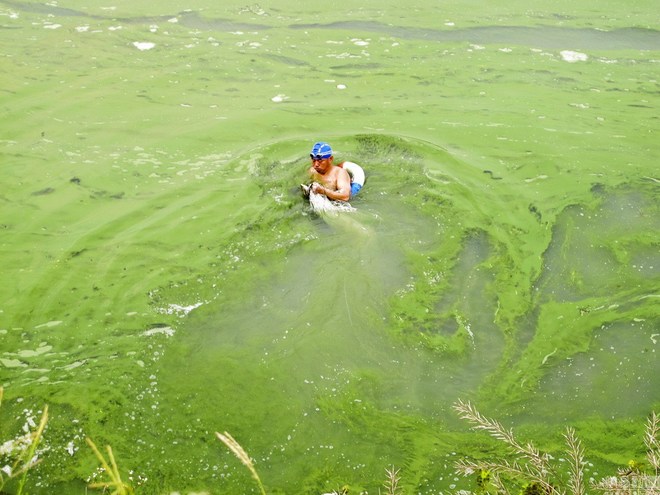
However, this man was not afraid of poisonous algae, still diving into the fishing lake.

According to experts, the effective way to prevent cyanobacteria is to treat rainwater, agricultural and industrial wastewater before discharging into the lake, planting many trees along rivers and lakes.
- Algae invade the deepest lake in the world
- Chinese sea is covered with algae covering nearly 29,000 km2
- Poisonous algae attack the US coast
- The culprit made the
- Lake water changes color because of algae
- America: Algae blooms and flowers damage the sea lion's brain
- Giant green algae blooms
- The lake in America changes color beautifully, but it is extremely bad news
- Special pink lakes
- Harmful algae take advantage of global warming
- Strangely, the lake turns blood red in Turkey
- Green algae raging in China
 Is the magnetic North Pole shift dangerous to humanity?
Is the magnetic North Pole shift dangerous to humanity? Washington legalizes the recycling of human bodies into fertilizer
Washington legalizes the recycling of human bodies into fertilizer Lightning stone - the mysterious guest
Lightning stone - the mysterious guest Stunned by the mysterious sunset, strange appearance
Stunned by the mysterious sunset, strange appearance The oldest lake on Earth
The oldest lake on Earth  Discover the mystery behind the world's roundest natural lake
Discover the mystery behind the world's roundest natural lake  Mysterious wonders of the world
Mysterious wonders of the world  The strange life of the 'black blood' tribe living on the world's highest freshwater lake
The strange life of the 'black blood' tribe living on the world's highest freshwater lake  The Mystery and Engineering Feat of Albano Emissary: The 2,000-Year-Old Roman Tunnel
The Mystery and Engineering Feat of Albano Emissary: The 2,000-Year-Old Roman Tunnel  Hundreds of fish jumped out of the lake in China, what happened?
Hundreds of fish jumped out of the lake in China, what happened? 